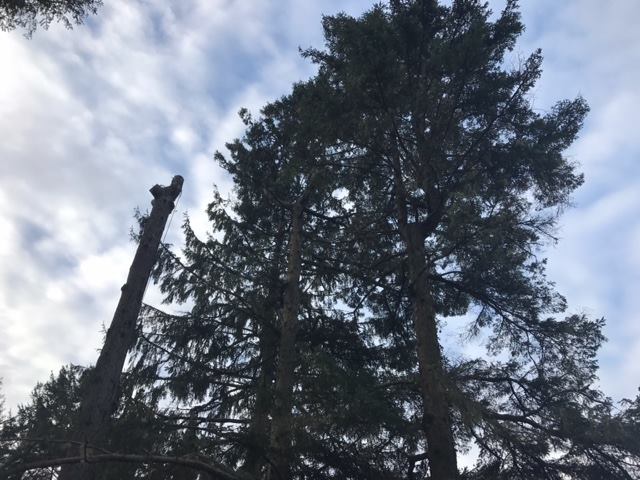What Is Topping?
Topping is the indiscriminate cutting of tree branches or stubs to lateral branches that are not large enough to assume the terminal role. Other names for topping include “heading,” “tipping,” or “rounding over.”
Topping is often used to reduce the size of a tree. A homeowner may feel that a tree has become too large for his or her property, or that tall trees may pose an unacceptable risk. Topping, however, is not a viable method of height reduction and certainly does not eliminate future risk.
Topping Stresses Trees
Topping can remove 50 to 100 percent of a tree’s leaf-bearing crown. Leaves are the food factories of a tree. Removing them can temporarily starve a tree and trigger various survival mechanisms. Dormant bugs are activated, forcing the rapid growth of multiple shoots below each cut. The tree needs to put out a new crop of leaves as soon as possible. If a tree does not have the stored energy reserves to do so, it will be seriously weakened and die.
Topping Leads To Decay
Correct pruning cuts are made just below the branch collar at the point of attachment. The tree is biologically equipped to close such a wound, provided the tree is healthy enough and the wound is not too large. Cuts made along a limb between lateral branches create stubs with wounds that the tree may not be able to close. The exposed wood tissues begin to decay. Normally a tree will “wall off” or compartmentalize, the decaying tissues, but few trees can defend the multiple severe wounds caused by topping. The decay organisms are given a free path to move down through the branches.
Topping Can Lead To Unacceptable Risk
The survival mechanism that causes a tree to produce multiple shoots below each topping cut comes at great expense to the tree. These shoots develop from buds near the surface of the old branches. Unlike normal branches that develop in a socket of overlapping wood tissues, these new shoots are anchored only in the outermost layers of the parent branches and are weakly attached.
New shoots grow quickly, as much as 20 feet in one year. Unfortunately, the shoots are prone to breaking, especially during windy or icy conditions. While the original goal was to reduce the risk by reducing the height, risk of limb failure is now increased.
Alternatives To Topping
Sometimes a tree must be reduced in height or spread, such as for prevailing utility clearance. There are recommended techniques for doing do. Small branches should be removed back to their point of origin. If a larger limb must be shortened, it should be pruned back to a lateral branch that is large enough to assume the terminal role. This method of branch reduction helps preserve the natural form of the tree. Sometimes the best solution is to remove the tree and replace with a species that is more appropriate for the site.
